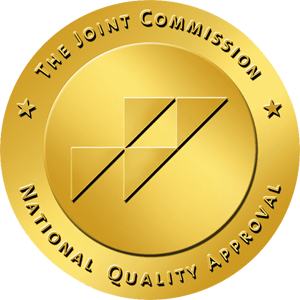Recovering from addiction is a long and challenging journey. While the initial withdrawal symptoms – known as acute withdrawal – can be intense, many individuals continue to experience lingering effects for weeks or even months. This condition is known as Post-Acute Withdrawal Syndrome (PAWS).
PAWS can make recovery difficult and increase the risk of relapse if not managed properly. In this article, we’ll explore what PAWS is, its symptoms, causes, and how to cope with it effectively.
What is Post-Acute Withdrawal Syndrome (PAWS)?
Post-Acute Withdrawal Syndrome (PAWS) refers to the prolonged withdrawal symptoms that occur after the initial acute withdrawal phase. Unlike acute withdrawal, which involves intense physical symptoms as the body detoxifies, PAWS primarily affects mood, emotions, and cognitive function.
PAWS is most commonly associated with withdrawal from substances like:
- Alcohol
- Opioids (e.g., heroin, prescription painkillers)
- Benzodiazepines (e.g., Xanax, Valium)
- Stimulants (e.g., cocaine, methamphetamine)
- Antidepressants
- Marijuana
These lingering symptoms can last for several weeks, months, or even up to two years, depending on the substance used, the duration of addiction, and individual health factors.
PAWS vs. Acute Withdrawal: What’s the Difference?
| Feature | Acute Withdrawal | Post-Acute Withdrawal (PAWS) |
|---|---|---|
| Duration | Days to a few weeks | Weeks to months (sometimes years) |
| Symptoms | Physical (e.g., sweating, nausea, tremors) | Emotional and psychological (e.g., mood swings, anxiety) |
| Cause | Body detoxifying from substance | Brain adjusting to life without substances |
Symptoms of Post-Acute Withdrawal Syndrome
PAWS symptoms can vary based on the substance, individual health, and the length of addiction. Some common symptoms include:
1. Emotional and Mood Symptoms
- Anxiety and panic attacks
- Depression
- Irritability and mood swings
- Lack of motivation
- Suicidal thoughts in severe cases
2. Cognitive Symptoms
- Difficulty concentrating
- Poor memory and brain fog
- Slow reaction time
- Impaired problem-solving skills
3. Sleep Disturbances
- Insomnia or trouble staying asleep
- Vivid or disturbing dreams
- Chronic fatigue
4. Physical Symptoms
- Headaches
- Dizziness
- Chronic pain
- Sensitivity to stress
5. Cravings and Relapse Triggers
- Sudden, intense urges to use the substance
- Increased sensitivity to stressors that may lead to relapse
These symptoms can come and go in waves, making recovery unpredictable.
Causes of PAWS
PAWS occurs because prolonged substance abuse alters brain chemistry. When a person stops using drugs or alcohol, their brain needs time to rebalance neurotransmitters like dopamine and serotonin. Some key causes include:
- Neurochemical Imbalance – The brain struggles to regulate emotions and cognition without the artificial stimulation from drugs or alcohol.
- Changes in Brain Structure – Chronic substance abuse alters brain pathways responsible for stress, mood, and decision-making.
- Emotional and Psychological Factors – Many recovering individuals have underlying mental health conditions, such as anxiety or depression, that worsen PAWS.
- Lifestyle Adjustments – Returning to everyday life without substances can be challenging, leading to emotional distress.
How Long Does PAWS Last?
The duration of PAWS varies based on:
- The type of substance used
- The length and severity of addiction
- Individual health and genetics
- The presence of mental health conditions
Estimated PAWS Timelines for Common Substances
| Substance | PAWS Duration |
|---|---|
| Alcohol | 6 months – 2 years |
| Opioids | 6 months – 1 year |
| Benzodiazepines | 1 – 2 years |
| Stimulants | Several months |
| Antidepressants | 6 months or longer |
PAWS symptoms tend to come in cycles, with periods of relief followed by sudden returns of symptoms.
Coping Strategies for PAWS
Managing PAWS effectively is key to maintaining long-term recovery. Here are some helpful strategies:
1. Medication and Therapy
- Medication-Assisted Treatment (MAT): Some individuals benefit from medications like naltrexone, buprenorphine, or antidepressants to balance brain chemistry.
- Cognitive Behavioral Therapy (CBT): Helps manage emotional symptoms and prevent relapse.
- Support Groups (AA, NA, SMART Recovery): Connecting with others in recovery provides emotional support.
2. Healthy Lifestyle Choices
- Exercise: Regular physical activity boosts endorphins and improves mood.
- Healthy Diet: A balanced diet rich in protein, omega-3s, and complex carbs helps brain function.
- Adequate Sleep: Establishing a sleep routine reduces fatigue and mental fog.
3. Stress Management Techniques
- Meditation and Mindfulness: Reduces anxiety and improves emotional balance.
- Deep Breathing Exercises: Helps manage cravings and stress.
- Journaling: Writing about emotions and progress can be therapeutic.
4. Avoiding Triggers and Relapse Prevention
- Avoid High-Risk Situations: Stay away from places and people associated with substance use.
- Develop Healthy Coping Mechanisms: Engage in hobbies, exercise, or creative activities.
- Have a Relapse Prevention Plan: Know what to do if cravings hit—call a sponsor, attend a meeting, or practice coping skills.
Post-Acute Withdrawal Syndrome (PAWS) is a challenging but manageable part of addiction recovery. It’s important to remember that PAWS is temporary, and with the right coping strategies, individuals can overcome it and lead a fulfilling, substance-free life.
If you or a loved one is struggling with PAWS, seeking professional help and building a strong support system can make all the difference. Stay patient, take care of your mental and physical health, and trust the recovery process.






